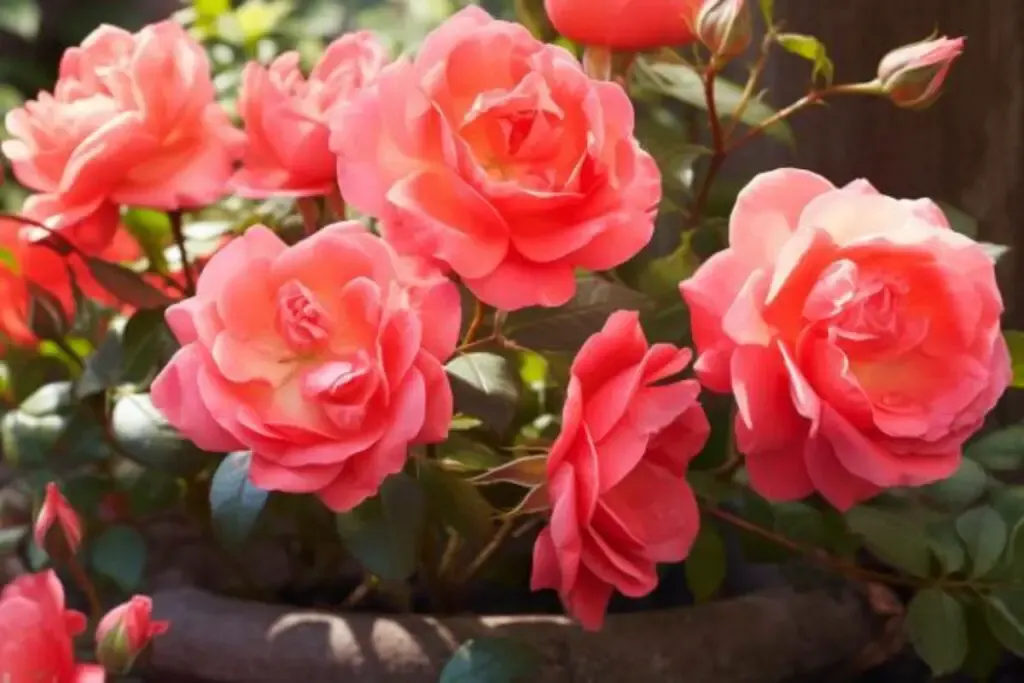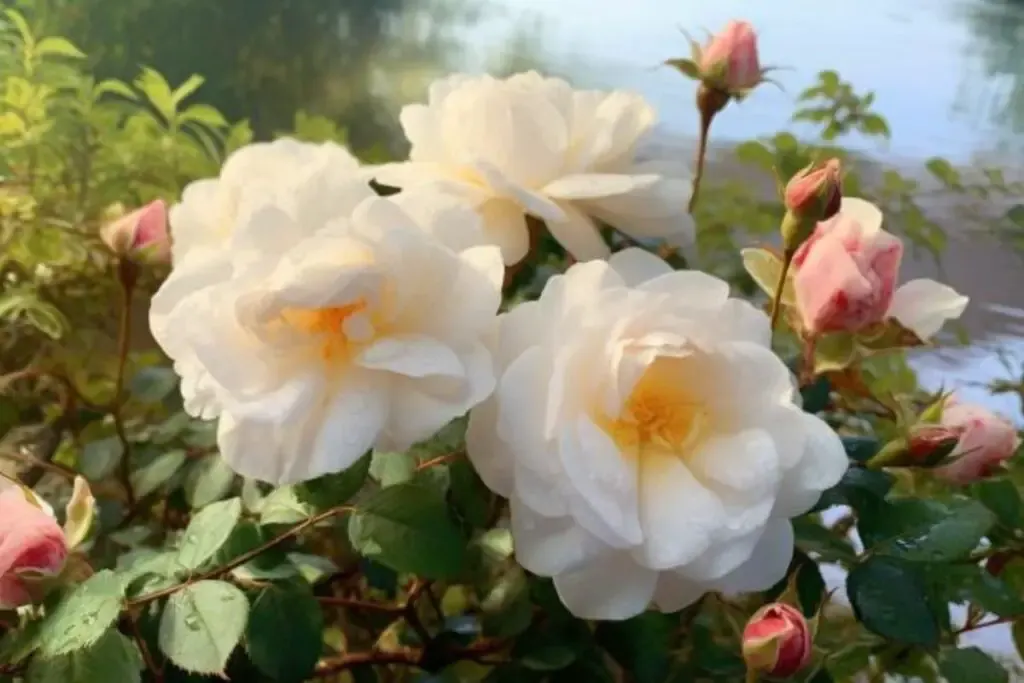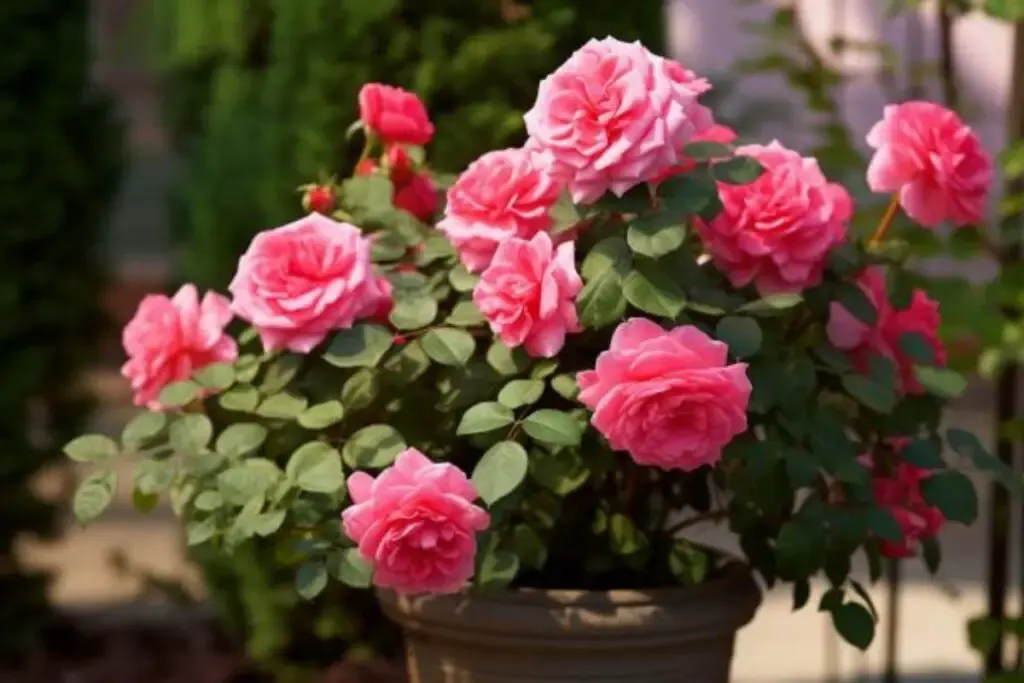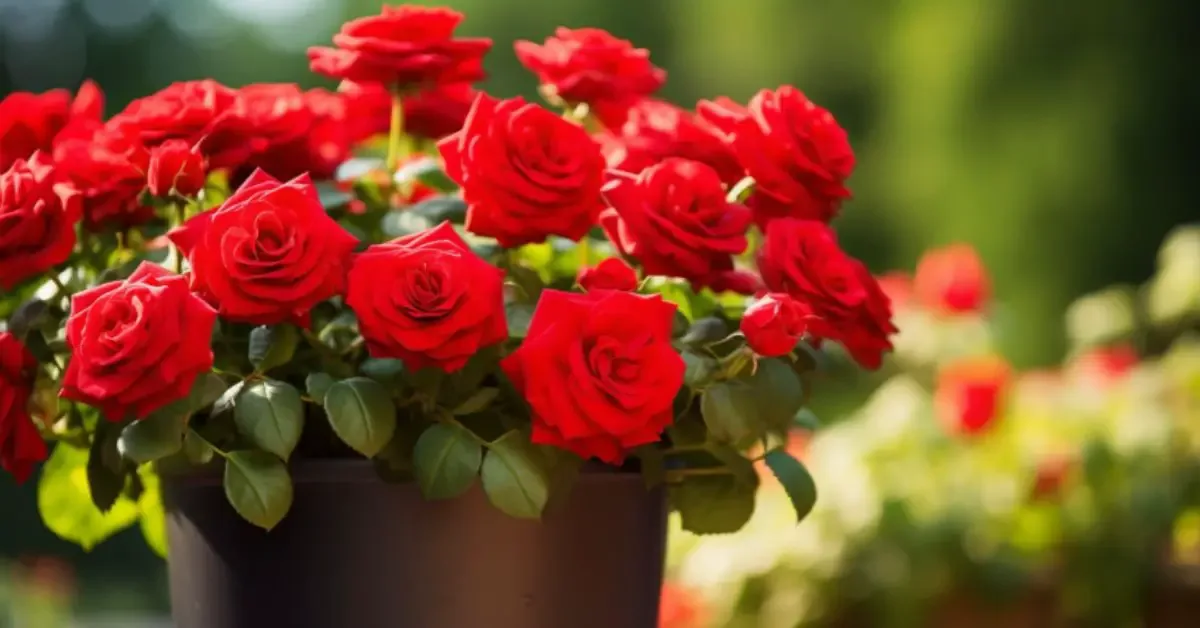Roses, with their timeless beauty and enchanting fragrance, are a favorite among gardeners and flower enthusiasts alike. But what if you’re short on garden space or simply want to enjoy these beauties on your patio?
Fear not! Growing roses in pots is not only possible but can also be incredibly rewarding.
As an experienced gardening blogger, I’m here to guide you through the process of cultivating thriving roses in containers, right on your balcony or doorstep.
Do Roses Grow Well in Pots?
Yes! Roses are surprisingly adaptable to container living, provided they are given the right care and conditions. Growing roses in pots allows for greater control over the soil quality, watering, and sunlight exposure, which are crucial factors in rose health.
It also offers the flexibility to move your roses around to capture the perfect amount of sun or to protect them from harsh weather. Plus, pot-grown roses can be a stunning addition to your outdoor living space, creating a focal point with their vibrant colors and delightful scents.
Best Rose Varieties for Pots
When choosing rose varieties for pot cultivation, it’s important to consider size, growth habits, and overall maintenance needs. Not all roses are suited for container life, but thankfully, many varieties thrive in this setting.
Here are three exceptional choices that are known for their adaptability, beauty, and ease of care in pots.
1. Knock Out Rose

The Knock Out Rose is a popular choice for container gardening due to its disease resistance and continuous blooming. These hardy roses bloom from early spring until the first frost, offering a long season of vibrant, colorful flowers.
Their compact and bushy growth habit makes them ideal for pots, where they can be a show-stopping centerpiece. Knock Out Roses are low-maintenance, making them perfect for both novice and experienced gardeners.
2. Iceberg Rose

Another excellent variety for pots is the Iceberg Rose. Known for its abundant clusters of crisp white flowers, the Iceberg Rose is a floribunda variety that blooms generously throughout the season.
It has a bushy, upright growth habit and is relatively easy to care for. Its classic elegance and resilience make it a great choice for adding a touch of sophistication to your container garden.
3. Patio Rose

Patio Roses, as their name suggests, are specially bred for container growing. These miniature roses are compact, reaching about 18 to 24 inches in height, making them perfect for smaller spaces.
Despite their size, they produce a profusion of blooms in a variety of colors, from deep reds to soft pinks and bright yellows. Patio Roses are ideal for adding a pop of color to your balcony or terrace and are especially appealing for their ease of care and charming appearance.
How to Grow and Care For Roses in Pots
Growing roses in pots requires a bit of know-how, but it’s a thoroughly rewarding endeavor. Here, I’ll share some expert tips to ensure your potted roses not only survive but thrive.
Remember, the key to successful container rose gardening lies in understanding the unique needs of roses and adapting your care routine accordingly.
Planting
Delight in the process of planting your rose by carefully nestling it into its new pot. Ensure the graft union sits just above the soil surface, a key to successful growth. Surround the roots gently with a rich potting mix, then water deeply to establish a nurturing environment.
This initial step lays the foundation for a thriving, blooming rose in your container garden.
Pot Size
Firstly, select the right pot. Roses need room to grow, so choose a container that’s at least 18-24 inches in diameter and equally deep. This size provides enough space for the roots to spread and helps retain moisture.
Ensure the pot has adequate drainage holes to prevent waterlogging, which can lead to root rot.
Light
Roses love the sun! Ensure your potted roses receive at least 6-8 hours of direct sunlight each day. If you’re in a particularly hot climate, some afternoon shade can help protect them from scorching.
Soil
Choosing the right soil is like setting the stage for a grand performance. For roses in pots, opt for a high-quality potting mix enriched with compost or well-rotted manure.
This blend ensures good drainage and provides essential nutrients, creating an ideal growing environment. Remember, fertile, well-draining soil is the secret to healthy, vibrant roses.
Water
Consistent watering is vital for potted roses. They don’t like to dry out completely, nor do they enjoy sitting in water. The goal is to maintain evenly moist soil.
During the hot summer months, you may need to water daily. Always check the top inch of soil; if it’s dry, it’s time to water.
Temperature and Humidity
Roses in pots thrive best in a balanced environment. They prefer moderate temperatures and enjoy a bit of humidity, which mimics their natural growing conditions.
Avoid extreme heat or cold, and strive for a spot where these beauties can bask in stable, comfortable conditions, ensuring their robust growth and splendid blooms.
Fertilizer
Feed your roses regularly with a balanced, slow-release fertilizer designed for flowering plants. This extra nutrition is especially important for potted roses, as they can’t draw nutrients from the ground.
Fertilize in early spring as they start to grow and continue every 4-6 weeks through the growing season.
Pruning Potted Roses
Pruning is an art that enhances the beauty and health of your potted roses. It’s not just about cutting back; it’s about shaping the future growth and bloom of your plant. For potted roses, pruning is usually done in early spring before new growth starts.
Look for dead, diseased, or weak stems and cut them back to healthy wood. Make your cuts at a 45-degree angle about 1/4 inch above a bud facing outward. This encourages outward growth, improves air circulation, and leads to a more open, aesthetically pleasing shape.
Regular deadheading, or removing spent flowers, throughout the blooming season also encourages more blooms and keeps your roses looking their best. Remember, each snip is a step towards a more splendid display of roses!
Overwintering
Preparing your potted roses for winter is a key step in ensuring their survival and vigor for the next season. As autumn wanes, begin by reducing the amount of water you give, allowing the plant to enter a natural dormancy.
Before the first frost, move your pots to a protected area, such as a garage or shed, where they’re shielded from extreme cold and wind. If keeping them outside, consider wrapping the pots in burlap or insulating material to protect the roots from freezing temperatures.
It’s also a good idea to add a layer of mulch on the soil surface for extra insulation.
During the winter, keep the soil barely moist, avoiding both dryness and waterlogging. As spring approaches, gradually reintroduce your roses to outdoor conditions, being mindful of late frosts.
With these careful steps, you’ll help your roses rest comfortably through the winter and emerge ready for a new season of growth and blooming.

